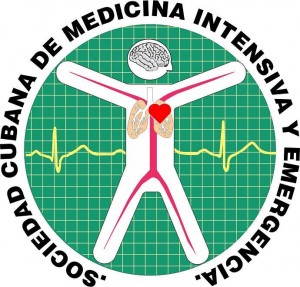Disección aórtica aguda como causa de dolor torácico intenso / Acute aortic dissection as a cause of intense thoracic pain
Palabras clave:
Disección aórtica, Emergencia hipertensiva, Dolor torácico / Aortic dissection, Hypertensive emergency, Thoracic painResumen
La disección aórtica es una afección poco frecuente pero de elevada mortalidad. Ocurre cuando se produce un desgarro de la capa íntima arterial como consecuencia de cifras de tensión arterial elevadas mantenidas. Es una emergencia hipertensiva con afección cardiovascular. La terapéutica básica de elección es el tratamiento inmediato de la hipertensión arterial y la reparación quirúrgica del daño vascular. Se presenta un paciente masculino de 48 años, hipertenso sin adherencia terapéutica, que fue remitido de su área de salud por dolor torácico intenso y cifras de tensión arterial elevadas, se realizó el diagnóstico de disección aórtica aguda; se impuso tratamiento antihipertensivo enérgico y analgesia con opiáceos. Su evolución ulterior fue favorable. Hacemos énfasis en el diagnóstico de esta afección y su diagnóstico diferencial ante todo paciente que se presenta con dolor torácico e hipertensión arterial.
Abstract
The aortic dissection is not a very frequent affection but of high mortality. It happens when a spontaneous intimae tear develops and blood dissects into the media of the aorta as a consequence of maintained high blood pressure. It is a hypertensive emer-gency with cardiovascular damage. The basic therapy of election is the immediate treatment of the arterial hypertension and the surgical repair of the vascular damage. A 48 year-old hypertensive male patient without therapeutic adherence is presented. He was referred for intense thoracic pain and high blood pressure, the diagnosis of acute aortic dissection was carried out; an immediate antihypertensive treatment and analgesia with opiate was imposed. The ulterior evolution was favorable. We do emphasis about the diagnosis of this affection and its differential diagnosis in all patients with thoracic pain and high blood pressure.
Descargas
Citas
1. Davies RR, Goldstein LJ, Coady MA, et al: Yearly rupture or dissection rates for thoracic aortic aneurysms: Simple prediction based on size. Ann Thorac Surg 2002;7:17-27.
2. Hagan PG, Nienaber CA, Isselbacher EM, et al: International Registry of Acute Aortic Dissection (IRAD)-new insights into an old disease. JAMA 2000;283:897-903
3. Klompas M: Does this patient have an acute thoracic aortic dissection? JAMA 2002;287:2262-2272
4. Milán RE, Pardo L, Santos M. Supervivencia de más de un año en un paciente con disección aortica tipo A. Revista Electrónica Dr. Zoilo E. Marinello Vidaurreta. [Internet]. 2015. [citado 2 de febrero de 2016];39(2)
Disponible en: http://www.ltu.sld.cu/revista/index.php/revista/article/view/106/93
5. Martín R, Rosales E, Ramos O, García EA. Disección aórtica toracoabdominal. MEDISAN [Internet]. 2012. [citado 2 de febrero de 2016];16:260 Disponible en: http://scielo.sld.cu/scielo.php?script=sci_arttext&pid=S1029-30192012000200014&lng=es&nrm=iso&tlng=es
6. Ince H. et al. Diagnosis and management of patients with aortic dissection. Heart. 2007;93:266–70.
7. Bortone AS et al. Endovascular treatment of thoracic aortic disease: four years of experience. Circulation 2004; 110 (suppl): 11262-7.
8. Shiga T et al. Diagnostic accuracy of transesophageal echocardiography, helical computed tomography, and magnetic resonance imaging for suspected thoracic aortic dissection: systematic review and meta-analysis. Arch Intern Med 2006 ;166:1350–6.







